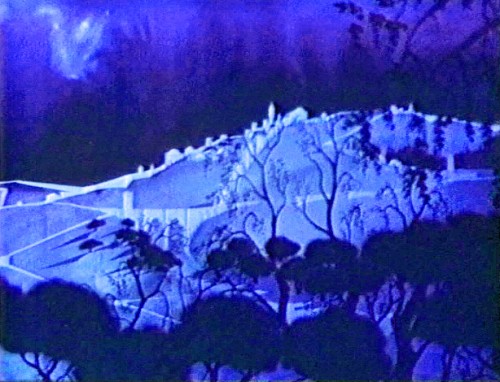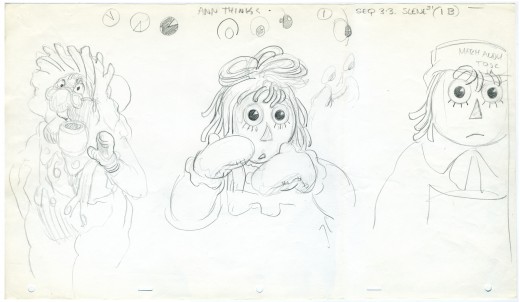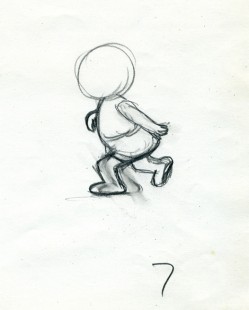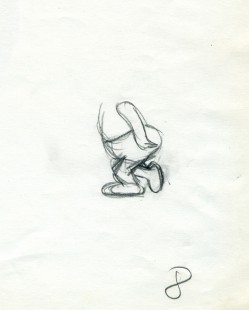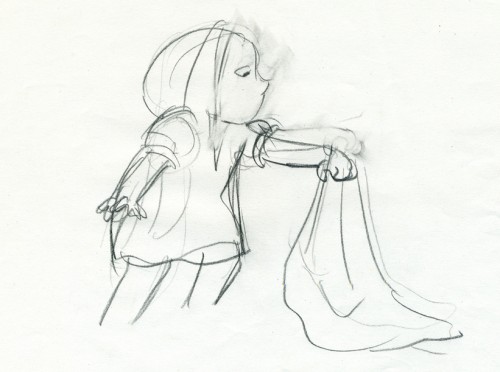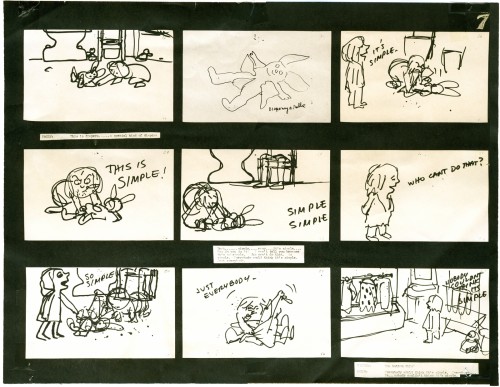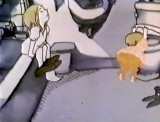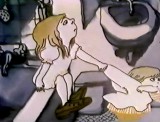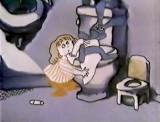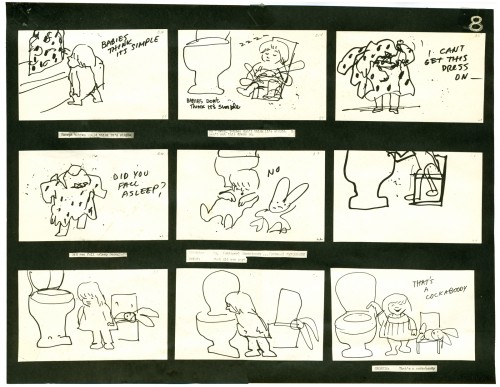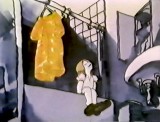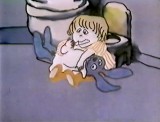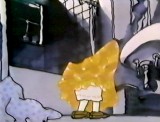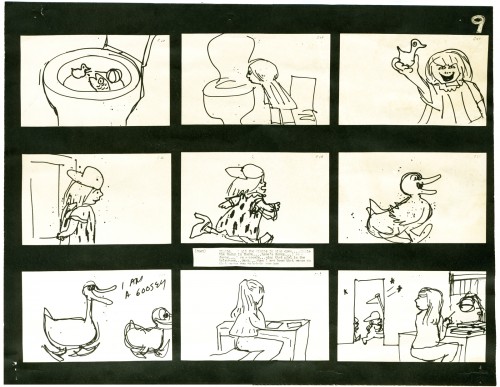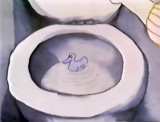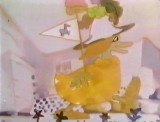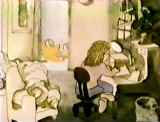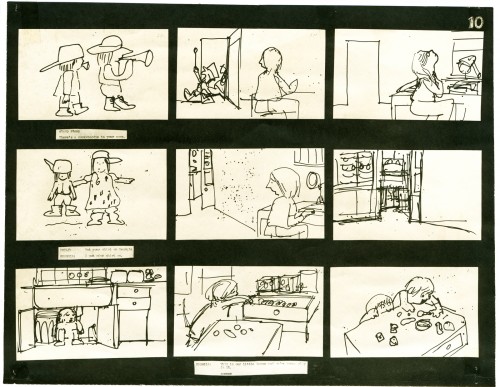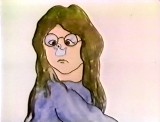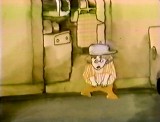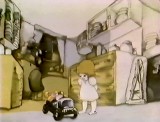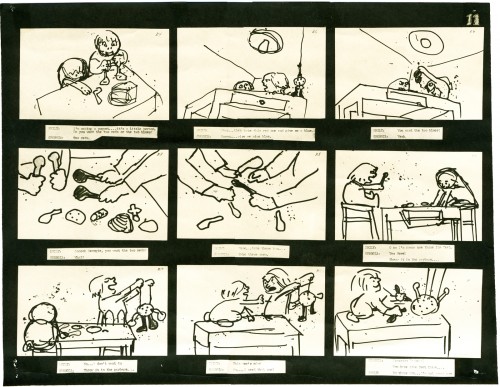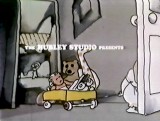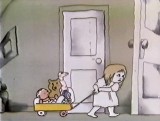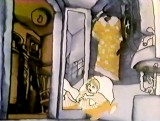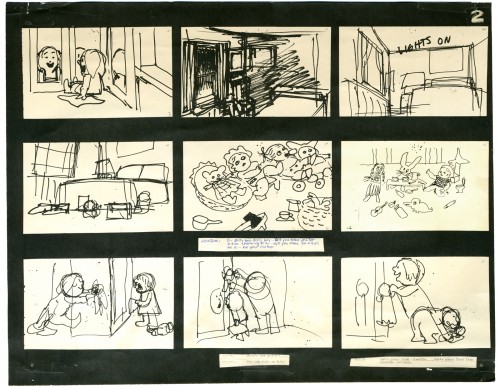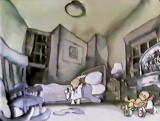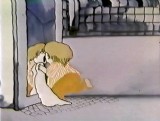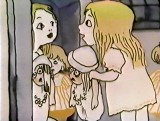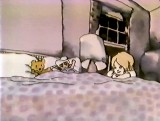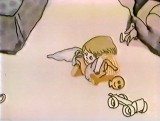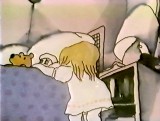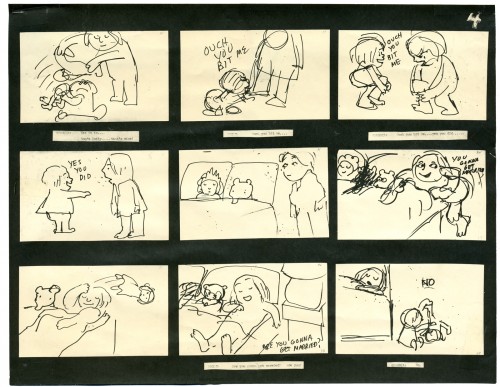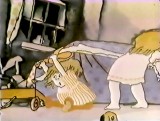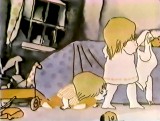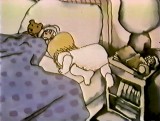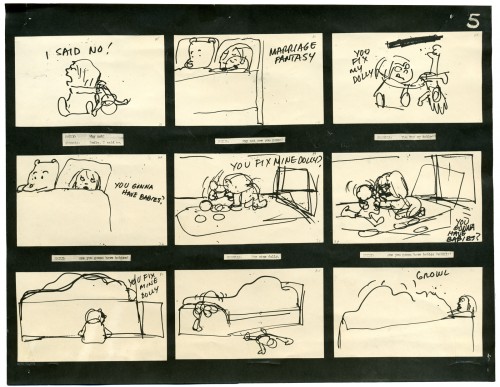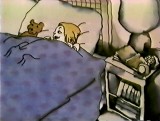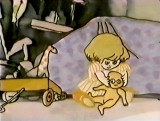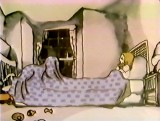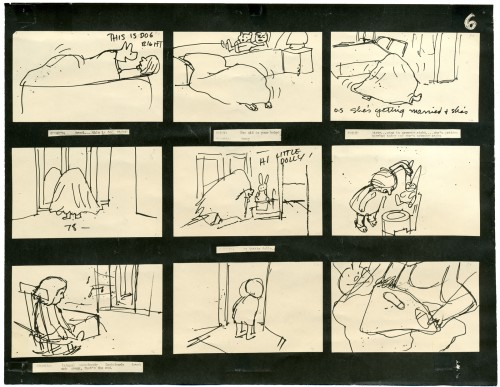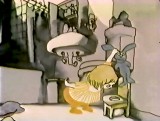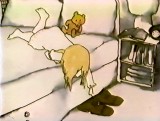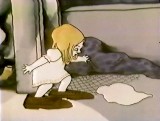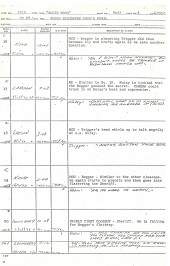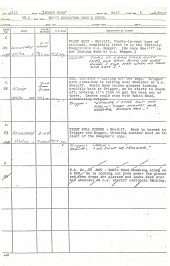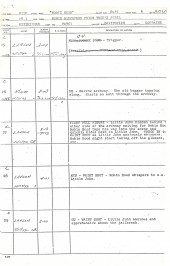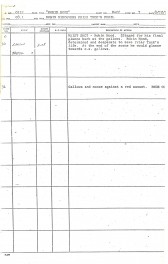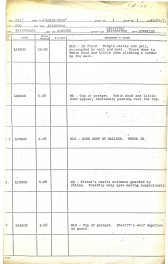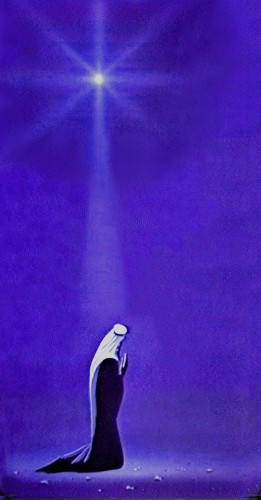Category ArchiveAnimation Artifacts
Animation &Animation Artifacts &Models &Richard Williams 21 Aug 2007 07:22 am
Raggedy Models
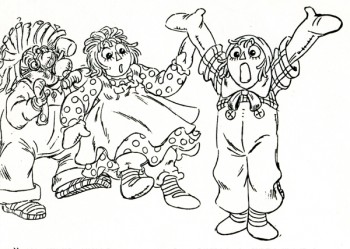 – As I posted last Friday, to celebrate the 30th Anniversary of Raggedy Ann & Andy: the Musical, I’m going to post a bunch of artwork from this film. I’m not even sure much of this material is of interest to anyone but those who worked on the movie, but since I worked on it, I’m interested.
– As I posted last Friday, to celebrate the 30th Anniversary of Raggedy Ann & Andy: the Musical, I’m going to post a bunch of artwork from this film. I’m not even sure much of this material is of interest to anyone but those who worked on the movie, but since I worked on it, I’m interested.
Here are a bunch of model sheets of the secondary characters. The film opens in a playroom, and lots of toys inhabit these first few minutes. They all suffer from the same problem – too much. There are too many lines, there were too many colors, there was too much flailing-about animation. It would have been better to keep it a bit quieter, but that was never the Dick Williams way.
Here they are, right off Xeroxed copies:
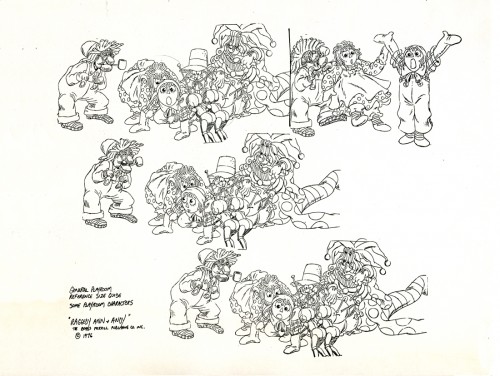
Most of these model sheets were pulled from completed animation. In the case of this
group shot, Dick Williams did these drawings in reworking Fred Helmich’s animation in
the “No Girl’s Toy” musical number.
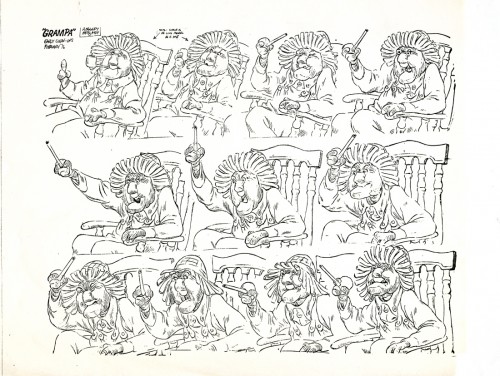
I really have to encourage you to click these images to enlarge. Gramps is the
perfect example of the brilliant detail that Dick Williams put into his animation.
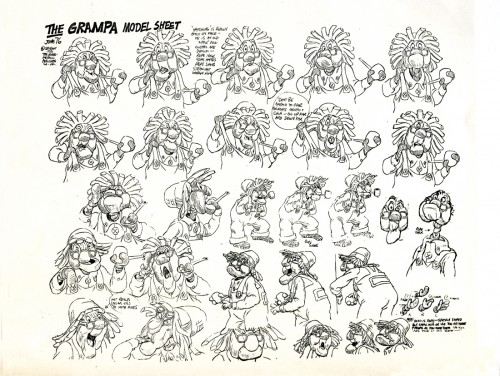
Both these Gramps model sheets represent separate scenes. Most of the key drawings
from the scenes were placed on these models.
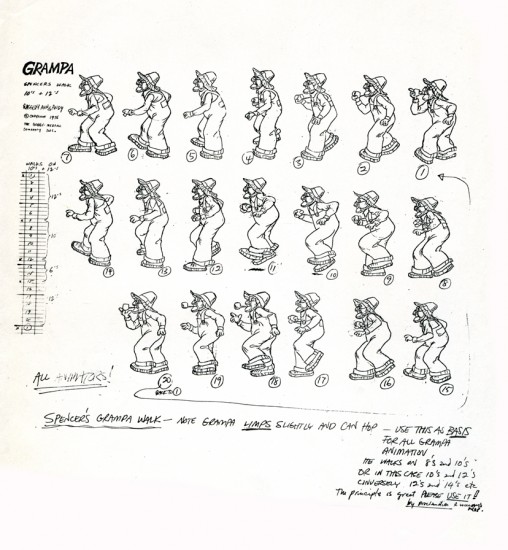
Here’s the walk cycle of Gramps done by Spencer Peel and approved by Dick Williams.
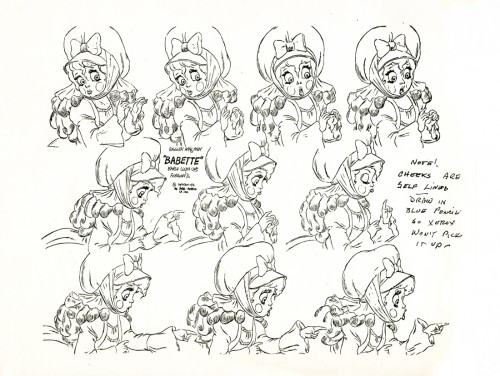
Hal Ambro did the animation on the Babette character, at least in the opening of the film where it was good. Dick Williams did the clean-up and inbetweens, himself.
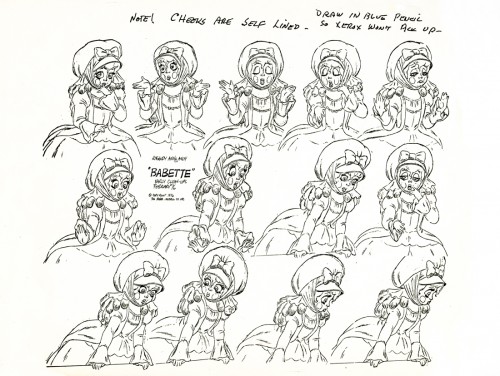
Dick’s clean-up did a stunningly brilliant job of locking in this character. I’m not quite sure we had anyone else on staff who could have done this character as well. Dick Williams is
an enormous talent, but it was too bad he was limited to inbetweening.
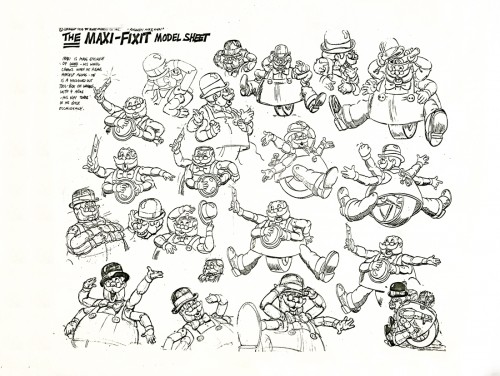
Maxi Fix-it was a nothing of a character, yet he involved endless energy in animation and clean-up. No wonder the film’s budget quadrupled during production, and it wasn’t enough.
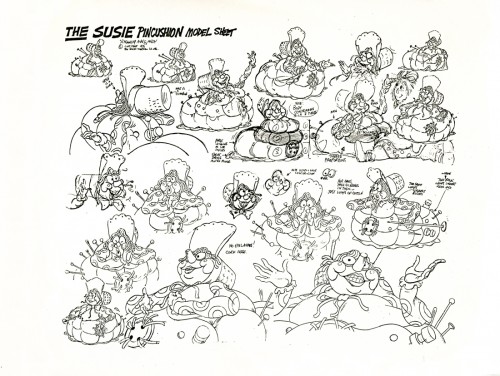
Susie Pincushion was just another character who had 22 colors on her.
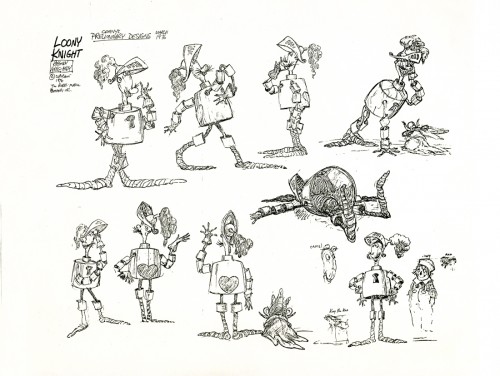
The drawings that were used for this preliminary model sheet were by designer, Corny Cole. What a talent! The character looks as though it could have fallen out of the oriiginal books by Johnny Gruelle. The life in each and every one of these drawings was solid gold. Too bad it ended up such a lifeless and annoying character when it finally hit the screen.
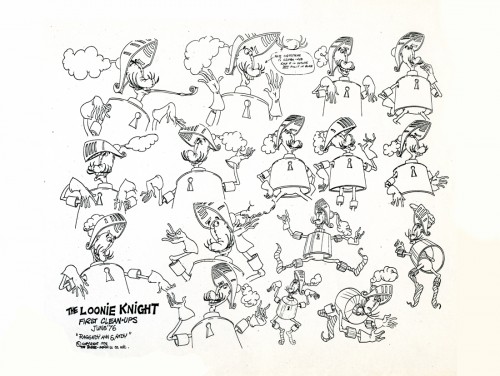
The clean up guide for the knight shows you what’s been lost.
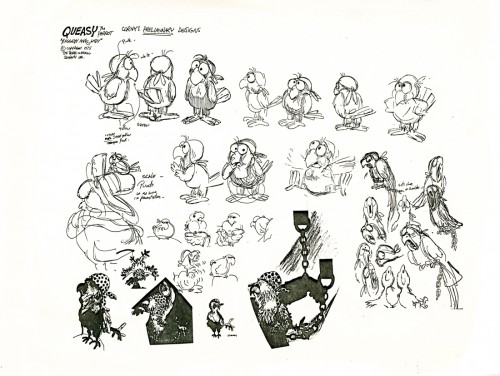
Queasy was the parrot that sat on the Pirate’s shoulder. Arnold Stang did his voice.
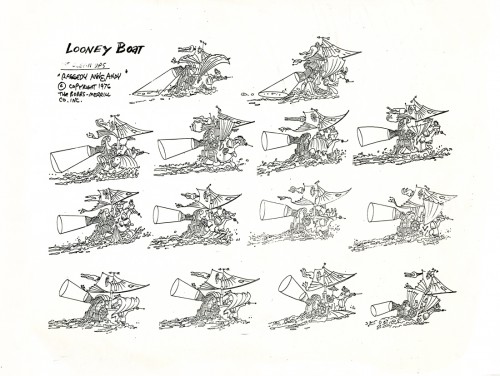
The animation of the pirate ship was split between Corny Cole and Doug Crane. I have
a couple of scenes done by Corny with his Bic pen animation. Someday I’ll post some of these drawings, but it’ll be a big chore to do it. Each drawing is so large that it’ll take three scans for each one and will require photoshop reconsrtuction. Lotsa work.
But they’re beautiful drawings, so it’ll probably be worth it if I can find the time.
Animation Artifacts &Layout & Design &Richard Williams &Story & Storyboards 17 Aug 2007 07:41 am
30 Raggedy Years
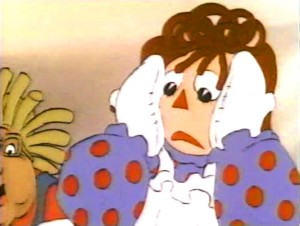 – Tom Sito‘s blog, yesterday, reminded me that it was the 30th anniversary of the release of Raggedy Ann & Andy:A Musical Adventure .
– Tom Sito‘s blog, yesterday, reminded me that it was the 30th anniversary of the release of Raggedy Ann & Andy:A Musical Adventure .
To quote Tom’s blog:
___ASIFA/Hollywood is planning
___to have a reunion of the crew of
___Raggedy Ann to celebrate the
___anniversary. It will be at the
___American Film Institute in
___Hollywood on November 17th.
___A simultaneous reunion will
___happen in New York City. A lot of wonderful people worked on this film, many getting
___their first start.
This gives me a good reason to post some artwork from this film in the next few months. So, excuse me if you find it annoying to see artwork from a second rate feature. However, this was a seminal film for a lot of talented people who got a chance to work along some of the masters.
Just check out this list of animators on the film:
_____Hal Ambro, Art Babbitt, George Bakes, John Bruno, Gerry Chiniquy,
_____Tissa David, Emery Hawkins, John Kimball, Chrystal (Russell) Klabunde,
_____Charlie Downs, Grim Natwick, Spencer Peel, Willis Pyle, Jack Schnerk,
_____Art Vitello, Carl Bell and Fred Hellmich left mid-production.
_____Gerry Potterton was the consulting Director.
_____Cosmo Anzilotti was the Asst. Director.
_____Corny Cole was the designer of the film.
These were some of the younger upstarts inbetweening and assisting:
_____Bill Frake, Jeffrey Gatrall, John Gaug, Eric Goldberg, Dan Haskett, Helen Komar,
_____Judy Levitow, Jim Logan, Carol Millican, Lester Pegues Jr, Louis Scarborough Jr,
_____Tom Sito, Sheldon Cohen and Jack Mongovan.
_____I supervised assistants and inbetweeners in NY,
_____Marlene Robinson did that job in LA.
If you don’t know who these people are, trust me they were the backbone of the business for many, many years prior to 1976.
In some ways I think this along with some of the Bakshi and Bluth films led directly toward the rebirth of animated features. There was a long dark period before it.
So to start with the artwork.
This is a scene which immediately follows the Pirate kidnapping Babette.
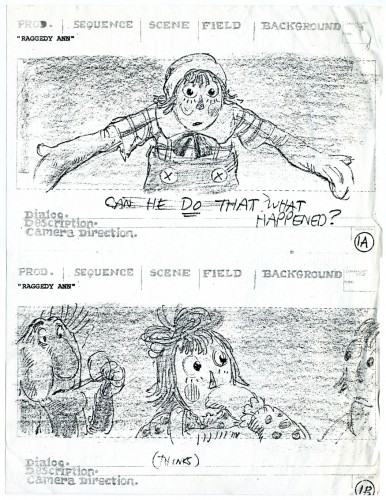
Here’s the storyboard for the two scenes. It’s a copy of
Corny Cole’s drawing from the director’s workbook.
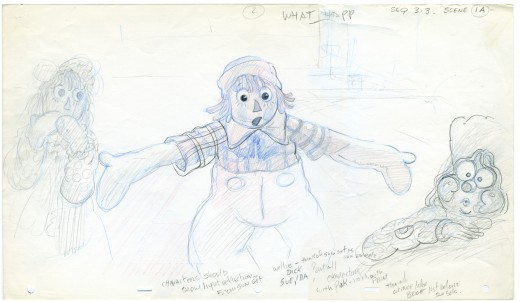
This is Corny Cole’s layout for Sc. 1A.
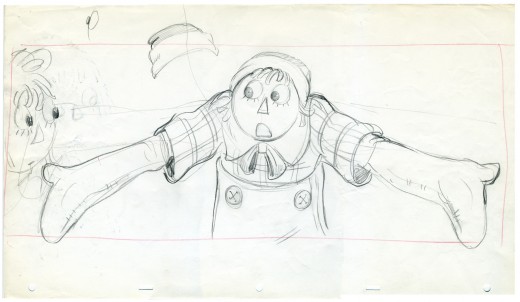
Here we have Dick Williams’ reworking of the same pose.
Fred Hellmich originally animated this, but Dick Williams redid the entire sequence, and
Fred left the film.
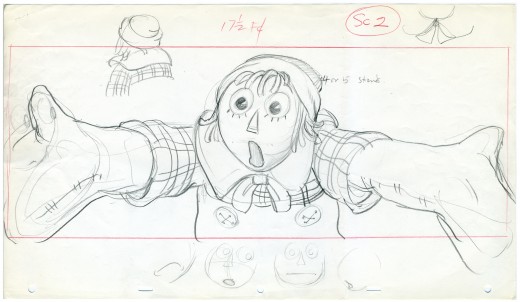
Cut back to Andy (as drawn by Dick Williams) for Sc. 2.
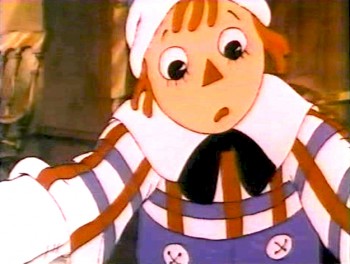
How small it all gets on a pan and scan video.
Animation &Animation Artifacts &Hubley &Tissa David &walk cycle 14 Aug 2007 07:56 am
Georgia walk
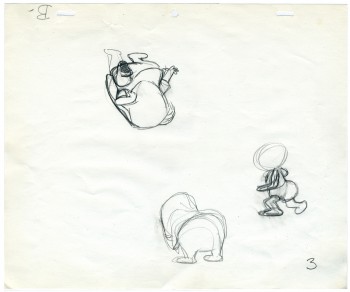 – Finishing up posts featuring artwork from John & Faith Hubley’s Cockaboody, I have this walk cycle from Tissa David.
– Finishing up posts featuring artwork from John & Faith Hubley’s Cockaboody, I have this walk cycle from Tissa David.
Tissa is careful not to use too much paper. Hence she reuses old paper for her very rough preliminaries as she figures out her animation.
It’s frequent, when visiting her work space, to see lots of pages featuring char-acters on both sides of the paper upside down as well as sideways. She doesn’t often let these rough roughs out of her hands before she throws them out. I guess I was there at the right time and talked her into giving me these drawings.
She animates the walk, here, on top pegs bacause that’s all she has left of space. Tissa nomally works on bottom pegs. Actually, since this is going to be a sliding cel, it would have been done top pegs anyway.
Georgia, the younger girl, leaves the bathroom and moves to the floor to play with a doll (whose head she accidentally pulls off).
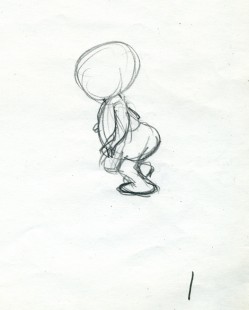 1
1 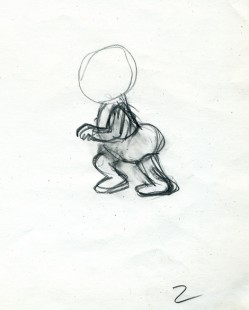 2
2
(click any image to enlarge.)
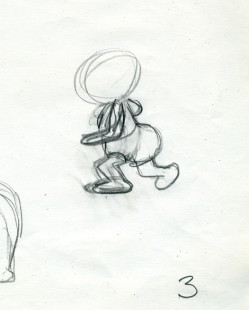 3
3 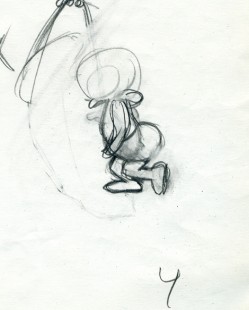 4
4
The walk is heavy and a bit flatfooted. She doesn’t come down on her toes but plants the entire foot.
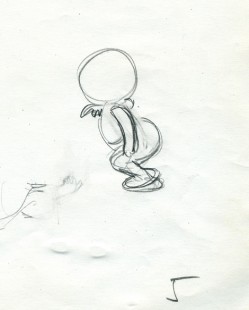 5
5 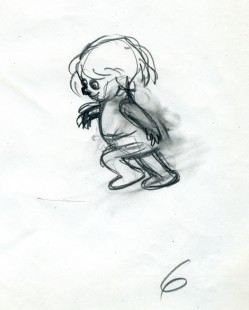 6
6
Her arms are high because, a baby, she’s still a bit off balance.
Animation Artifacts &Daily post 13 Aug 2007 08:17 am
Understanding Popeye
I’m starting to get overwhelmed with all this information about Popeye flying at me from the internet. The release of the dvd (which I still haven’t seen but will soon) has prompted every animation site to offer the new and unusual in the Popeye canon.
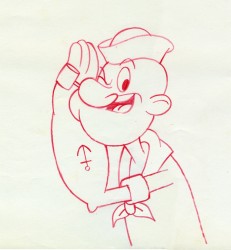 Of course, I’m just a guilty having posted some of Jack Zander’s drawings from a breakfast drink commercial.
Of course, I’m just a guilty having posted some of Jack Zander’s drawings from a breakfast drink commercial.
Part 1 and Part 2
By the way, thanks to Ken Priebe for locating a copy of a sister commercial (which Jerry Beck posted at Cartoon Brew). The drawings I offered were Jack Zander’s, but I’m pretty sure the Popeye in this other commercial was not animated by him.
I’d thought it was for Tang, but am surprised to learn the spot was for “Start,” a now-defunct competitor. (I guess having the astronauts drink Tang enabled that drink to monopolize the marketplace.) ____________________________________ (Click image to enlarge.)
- I would like to call attention to one young animation site that has a particularly useful bit of Popeye info: Understanding Animation has posted two parts of a three part history of Popeye. It’s quite a dense bit of information he’s written, very detailed. Like many a blog, it could have used an editor to correct some of the grammar. It’s hard to get the gyst of some of the sentences. There’s also a bit too much praise for John K. in a piece about Popeye, but there’s a lot of reading here.
Part 1 is about the comic strip character and Segar’s creation.
Part 2 is about the Fleischer cartoons and the subsequent developments that made Popeye a star.
This is well worth the read. I look forward to Part 3.
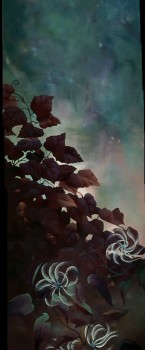 – The site that keeps me in awe every time I visit is Hans Bacher‘s beautiful Animated Treasures 1.
– The site that keeps me in awe every time I visit is Hans Bacher‘s beautiful Animated Treasures 1.
Hans recovers stunning backgrounds from animated films and recreates them using photoshop. (Today he offers a demo.) The Background from The Nutcracker Suite, pictured to the left, is a product of Hans’ fine recreation.
However, it isn’t the how it’s the beauty of the artwork featured. Hans seems to favor the watercolor backgrounds of the thirties and forties (Bless him!) rather than the opaque work of the fifties. His taste is impeccable, and his eye is flawless.
I can’t wait to get my hands on his book, Dream Worlds.
Rob Richards has just developed his own similar site, Animation Backgrounds. It’s excellent to see more of the Disney background work, but so far my taste runs toward Hans’ eye for artwork. I guess my preference is for the watercolor backgrounds of Hoppity than the fine work done in Mary Poppins or The Jungle Book. I love having both sites available to me; there’s a lot to be learned from both of them and the artwork they feature.
Animation &Animation Artifacts &Hubley &Story & Storyboards &Tissa David 10 Aug 2007 07:21 am
Cockaboody Layouts
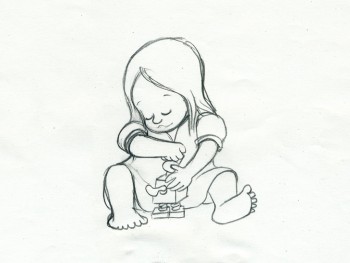 – To hook up with the Cockaboody storyboard I’ve posted in three parts (Part 1, Part 2, Part 3)
– To hook up with the Cockaboody storyboard I’ve posted in three parts (Part 1, Part 2, Part 3)
I thought I’d post some of the key drawings done by Tissa David.
To make them a bit more meaningful, to see what a really sensitive animator adds to a film, with the help from her director, I’m also posting the storyboard drawings that relate to these animation keys.
(Click any image to enlarge in a different view.)
If you watch the film with the storyboard in front of you, you’ll find a lot of discrepancies. The film grew as the animation began.
While working for Phil Kimmelman & Ass. for a short period (which just so happens to have been the exact time the Hubleys were making Cockaboody – I came back to their studio and joined their film in the very last stages) I learned an interesting saying that was the credo at Kimmelman’s. At every stage the film should get bigger. By this, they meant that the animator should take the storyboard and build on it. The Assistants should add whatever they could to the animator’s work, etc. I liked the sound of that and remind myself of it often and try to plan my films so that will be likely to happen.
I certainly think that Cockaboody does this.
If you want to see the film, it’s currently on YouTube.
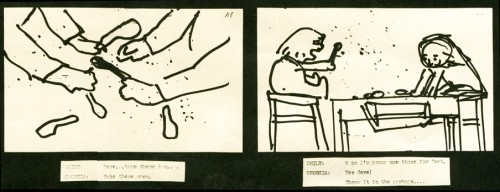
Tissa takes this play with the blocks and places it on the floor. This keeps all of the action down at the girls’ level and allows the blocks to be used throughout the film. They show up
a bit later as part of the background art.
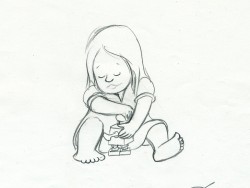
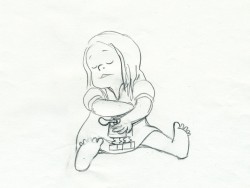
The blocking also puts more attention onto the character of the girls instead of having to have them climb up the chairs to get in place at the table.
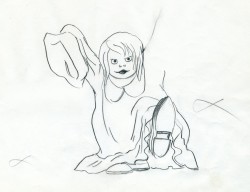
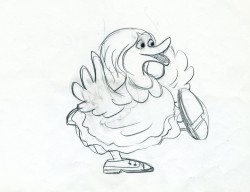
The storyboard drawing above left (with the “goosey”) is the only representation of the girl wearing her father’s shoes. Tissa took this small bit and ran with it.
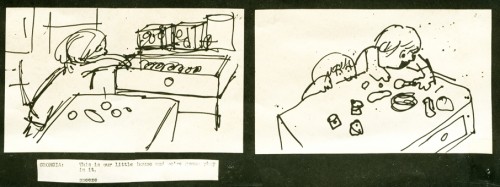
Obviously the action in the boards has nothing to do with the action in the film.
Tissa moved the girl to the closet quietly getting us into the next sequence with this girl
still in grownup shoes.
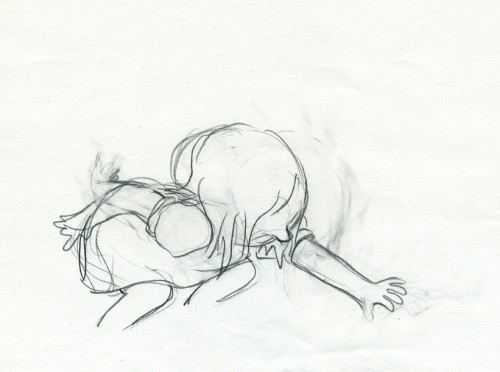
Both of these drawings (above and below) use the father’s shoes on another level.
It forces the girl to bend far to pick up the “blankey.”
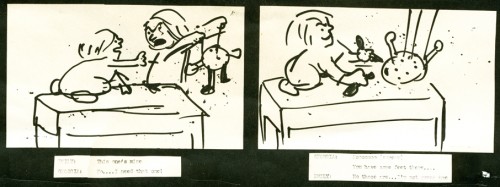
Again we’re off the table on the floor, and this sequence now builds out of what came
in the past. There’s a lot of definition in the two kids at this point.
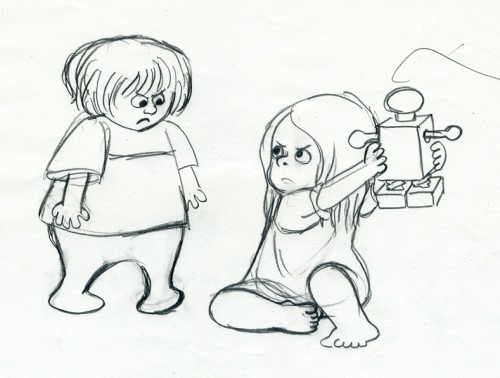
Even the toy has more definition in Tissa’s hands. I’m sure there was some discussion
of this with John. The film takes a solid shape, built on the storyboard drawings and developed with another voice.
Animation Artifacts &Hubley &Story & Storyboards 09 Aug 2007 07:43 am
Cockaboody Board Part 3
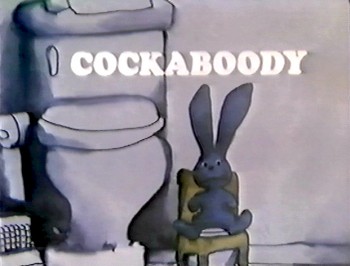 – Here we have the conclusion of the storyboard John Hubley drafted for the short film, Cockaboody.
– Here we have the conclusion of the storyboard John Hubley drafted for the short film, Cockaboody.
These are the direct links to
Part 1 and Part 2.
The film was an outgrowth of an early recording John and Faith made of their two daughters, Emily and Georgia. While teaching at Yale the Hubleys worked with the students in their class to help develop this storyboard. One of the students, Kate Wodell, came to work in the studio and was a mainstay there for many years and continued for a while helping Faith on many of her shorts after John died.
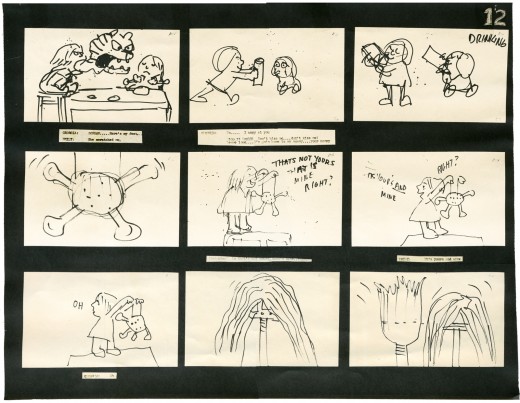
__
__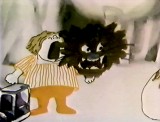 _
_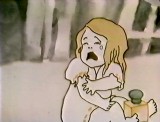 _
_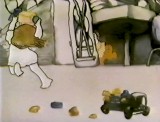
__
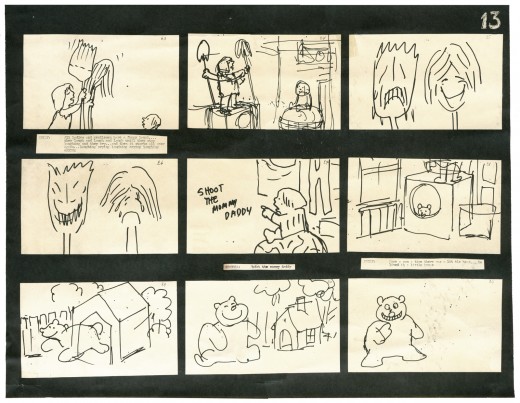
__
__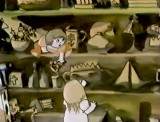 _
_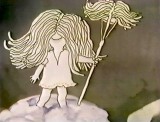 _
_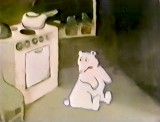
_
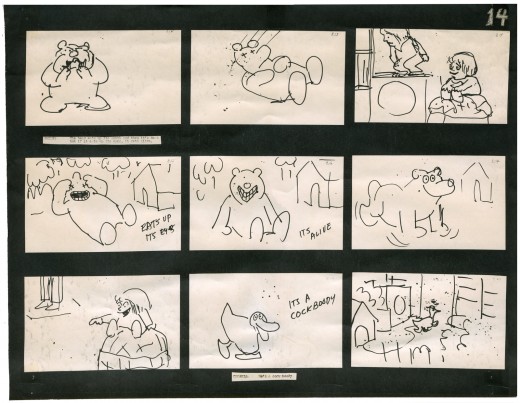
__
__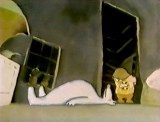 _
_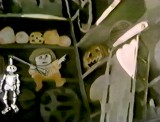 _
_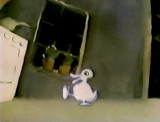
__
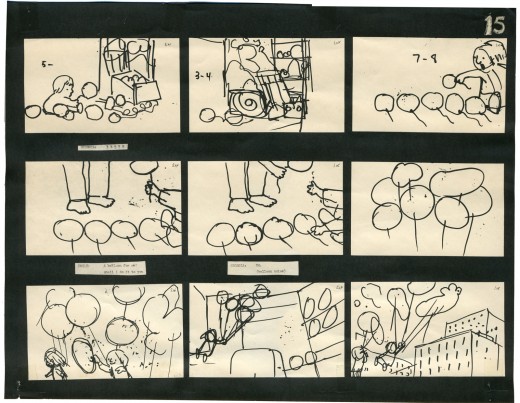
__
__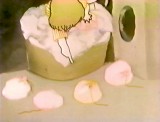 _
_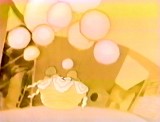 _
_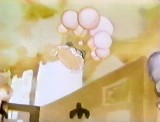
__
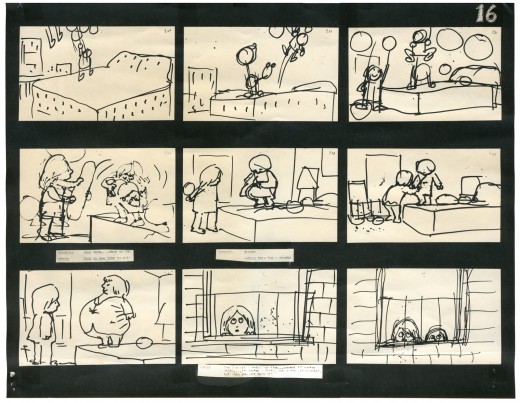
__
__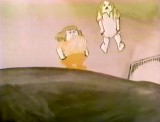 _
_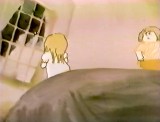 _
_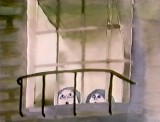
__
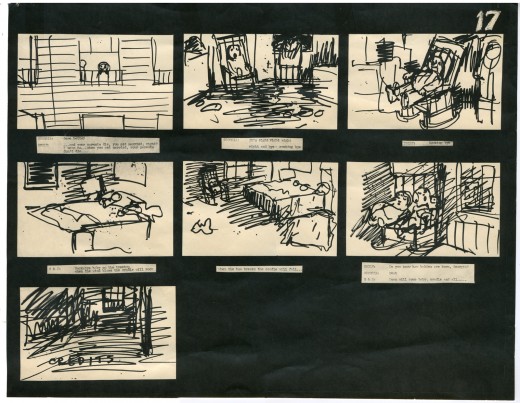
__
__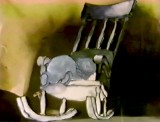 _
_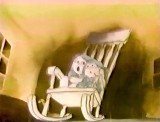 _
_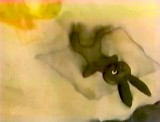
Animation Artifacts &Hubley &Story & Storyboards 03 Aug 2007 07:32 am
Cockaboody Board 2
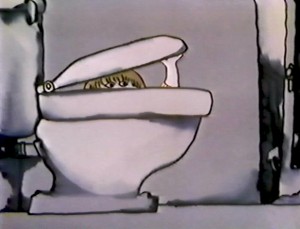 - When we last left the storyboard for Cockaboody, the girls were in the bathroom about to diaper their bunny doll. The story is about toilet training for children.
- When we last left the storyboard for Cockaboody, the girls were in the bathroom about to diaper their bunny doll. The story is about toilet training for children.
Here’s the direct link to Part 1.
Cockaboody, of course, is the film by John and Faith Hubley. The storyboard, with all of the drawings done by John, was developed in conjunction with the Hubley’s class at Yale. The students actively discussed the board and offered their participation in the growth of the film’s origin. A documentary was also produced showing the production of the animated short.
The film grew out of some early tapes recorded by the Hubley daughters, Georgia and Emily, who were recorded at play in a studio. The conversations by the children were all improvised. This is not unlike the prior Hubley films, Moonbird and Windy Day.
As with the previous post, I’m including some frame grabs of the actual film underneath the appropriate storyboard sections. Tissa David animated the film completely, herself. No assistants worked with her. Faith inked the entire film.
You’ll notice that the action in the film varies from the setups in the storyboard. This undobted had to do with Tissa’s involvement. She would often rework things with John and alter the filmmaking. John, and most of the directors Tissa works with, was open to this. She has a masterful sense of camera placement and uses it throughout this film.
_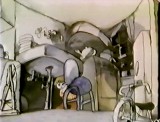
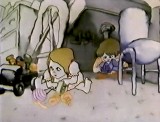
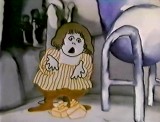
________________________________________________________ To be continued.
Animation Artifacts &Hubley &Story & Storyboards 30 Jul 2007 08:06 am
Cockaboody Board 1
 – I have a photostat copy of the storyboard to John and Faith Hubley‘s short film, Cockaboody. So I thought I’d post it to give a good demo of a storyboard from a master. The board was done in 1973.
– I have a photostat copy of the storyboard to John and Faith Hubley‘s short film, Cockaboody. So I thought I’d post it to give a good demo of a storyboard from a master. The board was done in 1973.
I had worked at Hubley’s for four months on Letterman and was layed off when that work ran out. They started preliminary work on Cockaboody while I was working on the feature Tubby The Tuba.
I left that project in time to get back to see the final scenes of Cockaboody colored, and I did a little animation of a rocking chair, with the two girls cradling it, at the film’s end. I didn’t do enough work on the film to receive credit, but I can still see my pencil lines on those two girls at the end of the film.
The film tells the story of two girls playing in a room next door to their babysitter. They laugh they cry they laugh they cry.
The film was improvised by Emily and Georgia Hubley in a recording studio years before they started the film. From the edited tracks a story was culled, and a storyboard formed. John did all of the drawings in storyboarding it.
Here are the first six pages; there are 17 in all. I’ve inserted fraame grabs so you can see how the final turned out. Tissa David animated the entire film.
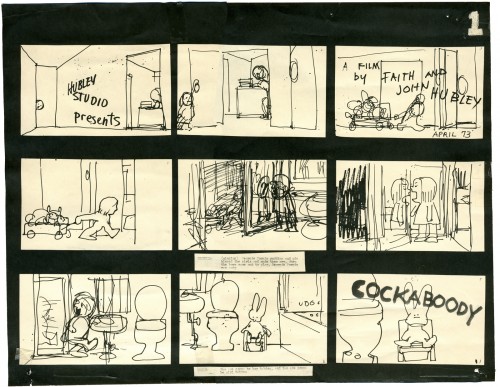
___(Click any image to enlarge.)
____________________________________________________(to be continued.)
Animation Artifacts 24 Jul 2007 07:47 am
Drafting Robin Hood
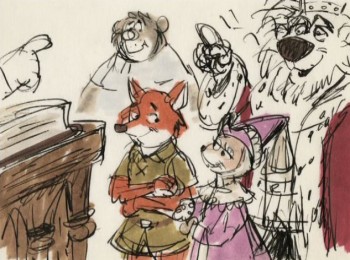 – It’s been a while since I’ve posted any charts or drafts, so here is a sequence from Disney’s Robin Hood that I have.
– It’s been a while since I’ve posted any charts or drafts, so here is a sequence from Disney’s Robin Hood that I have.
Will Finn featured two really interesting posts on his blog (pt. 1 / pt. 2) about the design of this film’s characters, and these reminded me that I had these drafts.
They’re apparently early and are marked as “rough.” Indeed, the names are hand written into the drafts, so I suspect some changes occurred after they were set.
The sequence is called “Robin Discovers Tuck’s Peril.” It was directed by Woolie Reitherman, Jeff Patch was the Asst. Director of this sequence, Basil Davidovich the Layout Supervisor. Animators include: John Lounsbery, Eric Larson, and Hal King.
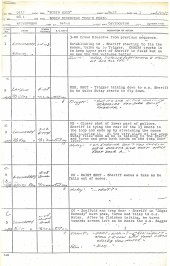 1
1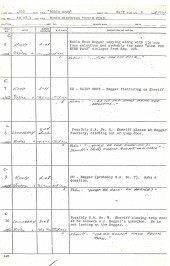 2
2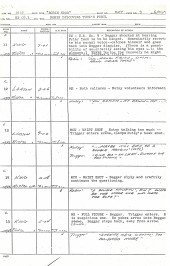 3
3
(Click on any image to enlarge.)
Animation Artifacts 21 Jul 2007 09:07 am
An Eyvind Earle Christmas
I’ve pulled some frame grabs from the Eyvind Earle “animation” done for the Tennessee Ernie Ford Show.
“The Story of Christmas” is a piece which is about ten minutes long interspersed throughout this half hour special.
The entire show is a Christian carol sing featuring the Roger Wagner Chorale singing around Tennessee Ernie’s gospel read and sing-along.
The whole is a very reverent piece with no attempt at lightness and comes off as very religious. This would certainly not work on television today, never mind ABC TV which is where it premiered as one episode of the Tennessee Ernie Ford series. Some of you may remember the animated Hubley titles for the show which can be found in John Halas‘ Technique of Film Animation.
Three segments feature the animated graphics with the group singing. The only real narrative tells the birth of Christ in animation. Otherwise the Roger Wagner Chorale, dressed in Dickensian outfits, gather around varied sets looking like the early 19th Century England.
(Click any image to enlarge.)
Earle’s animation was done immediately after Sleeping Beauty was completed. He’d left the studio (or was more probably left by the studio during their massive layoff at the time) and formed his own small independent studio to do work like this. I think this was probably his largest job, and it seems perfectly suited to his style.
Lots of pans and flare effects are built around sliding cells trying to imitate the look of the multiplane camera. There really is no animation here, just the sliding cels of the characters over the pans. It’s still quite attractive for what it is and holds the attention. The piece is well planned and shows off everything Earle had learned at Disney’s studio.
Go here to purchase a copy of the dvd.
Here are frame grabs from many of the scenes:
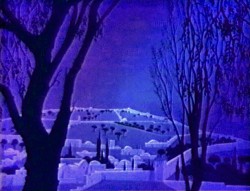 _
_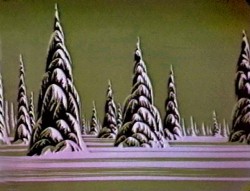
.
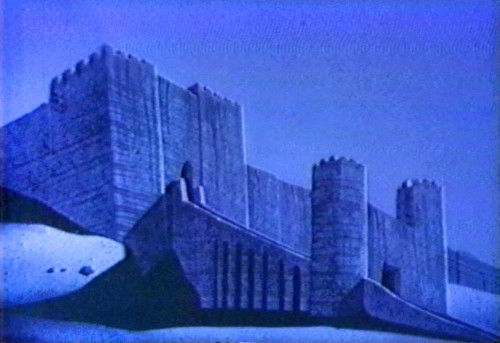
.
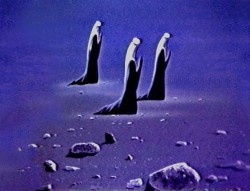 _
_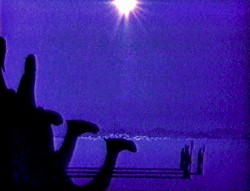
.
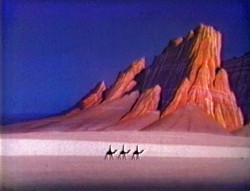 _
_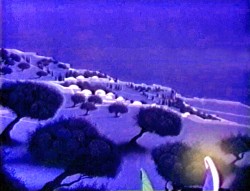
.
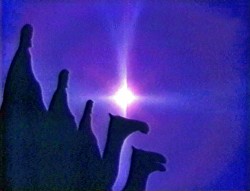 _
_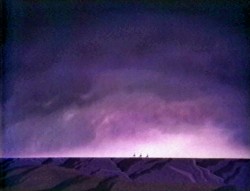
.
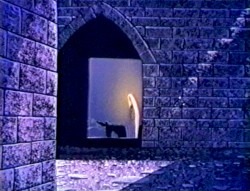 _
_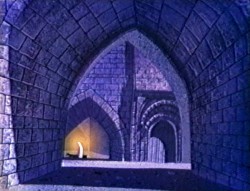
.
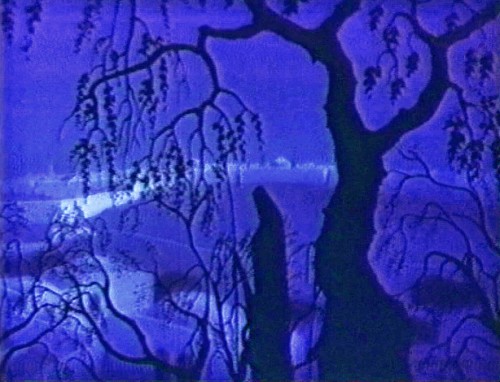
.
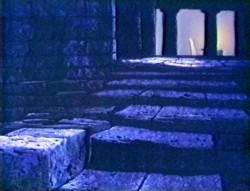 _
_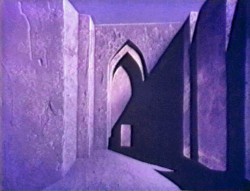
.
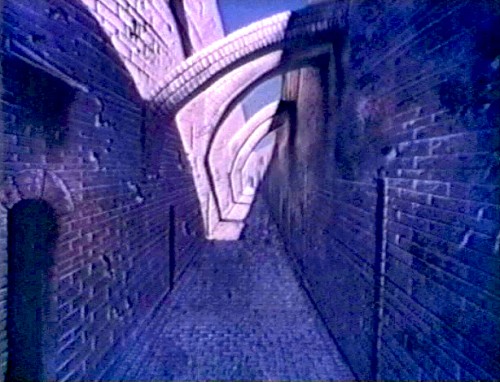
.
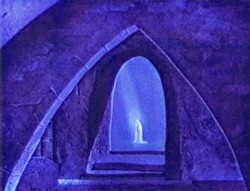 _
_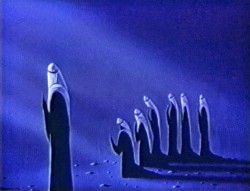
.
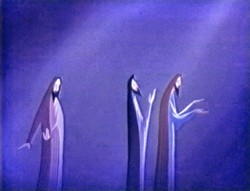 _
_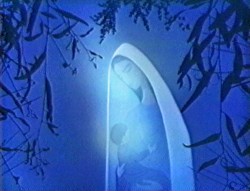
.
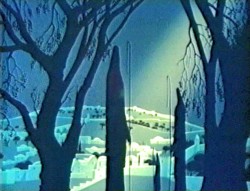 _
_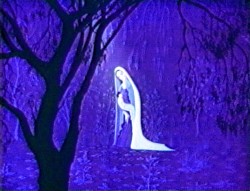
.
